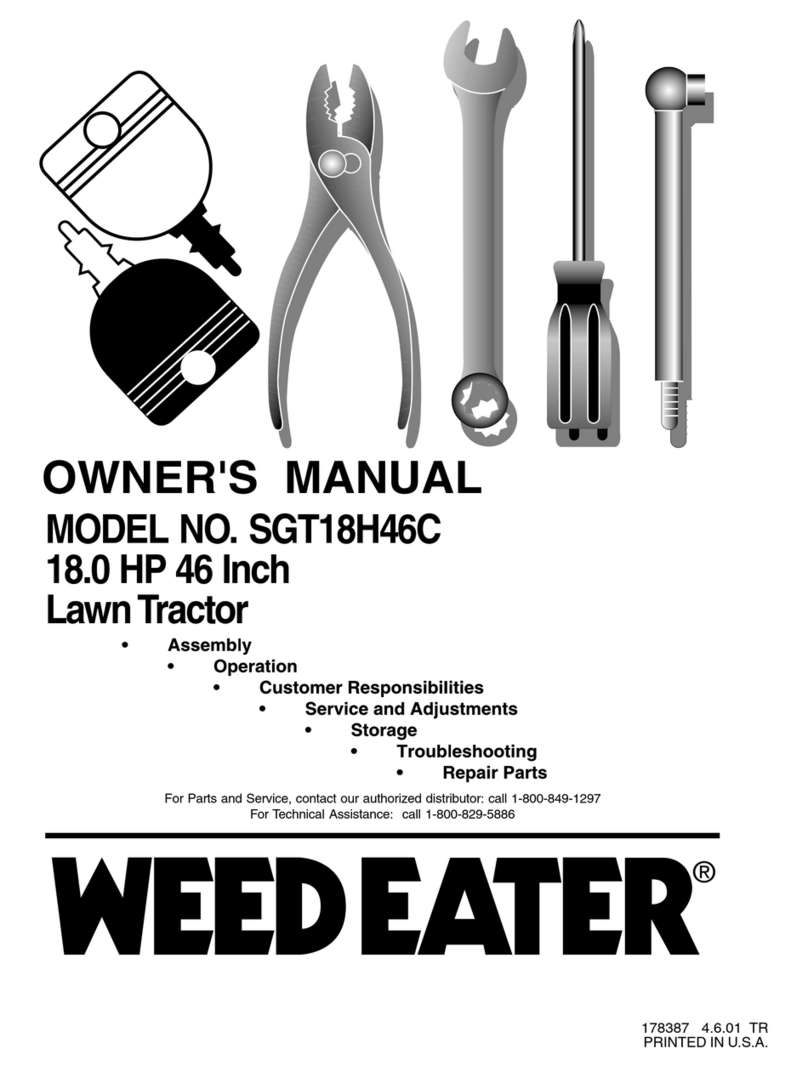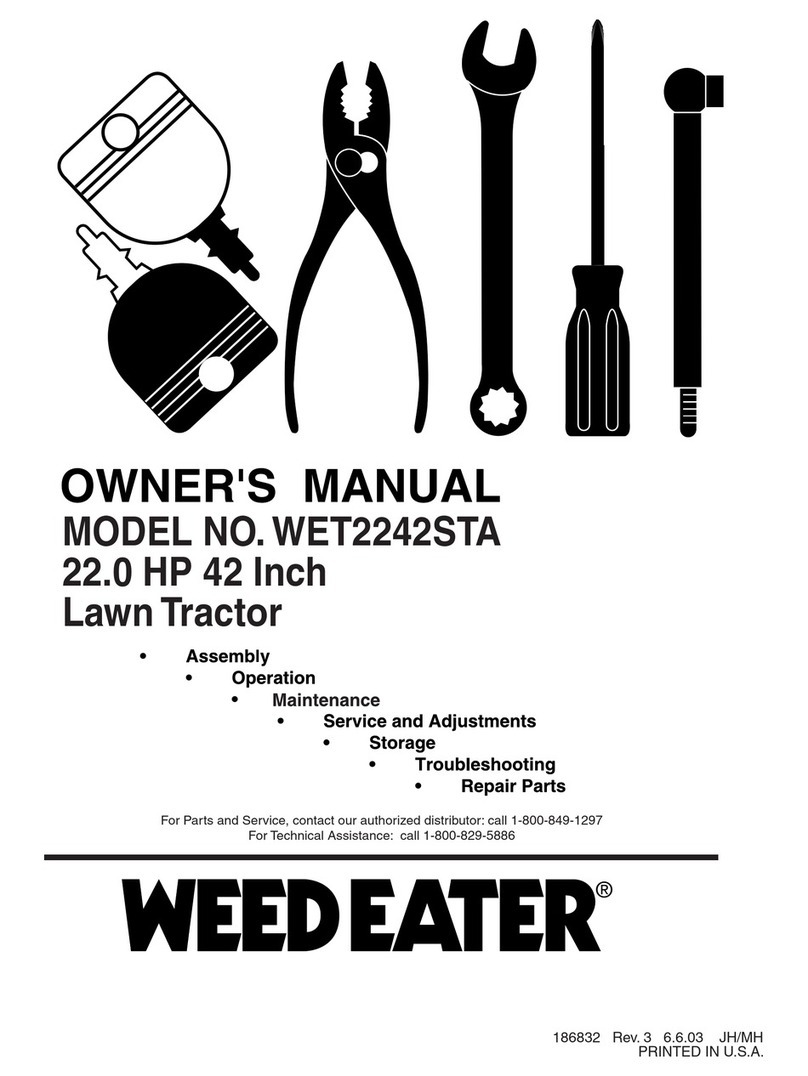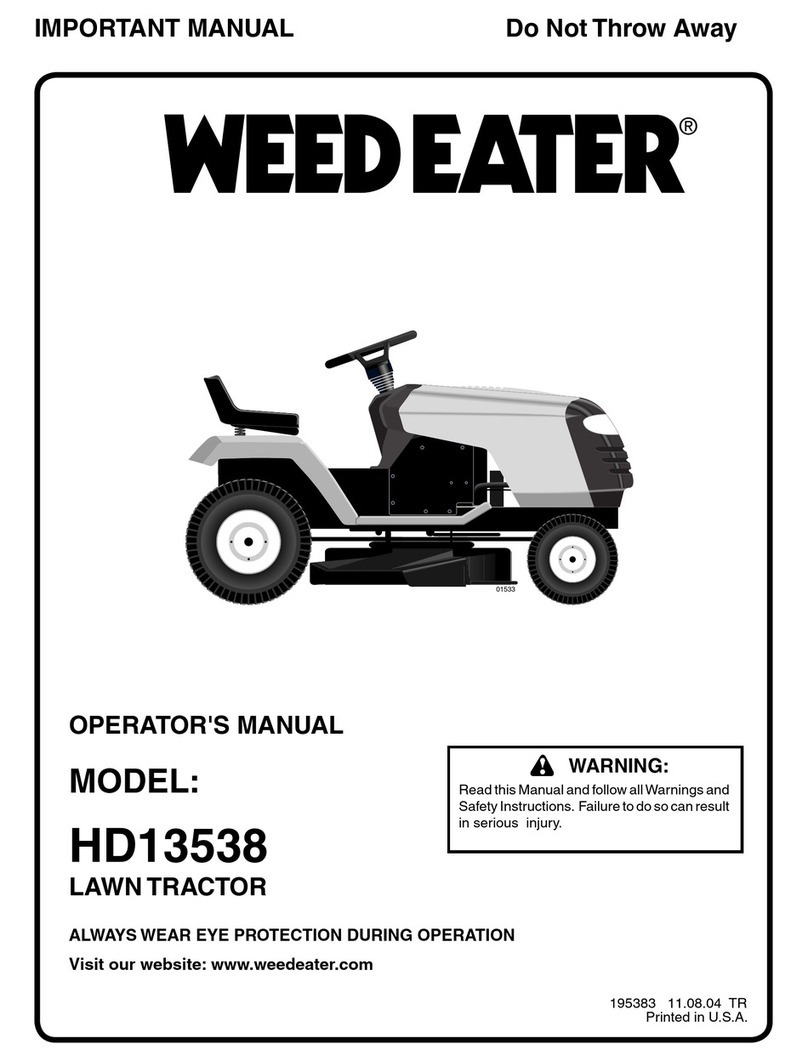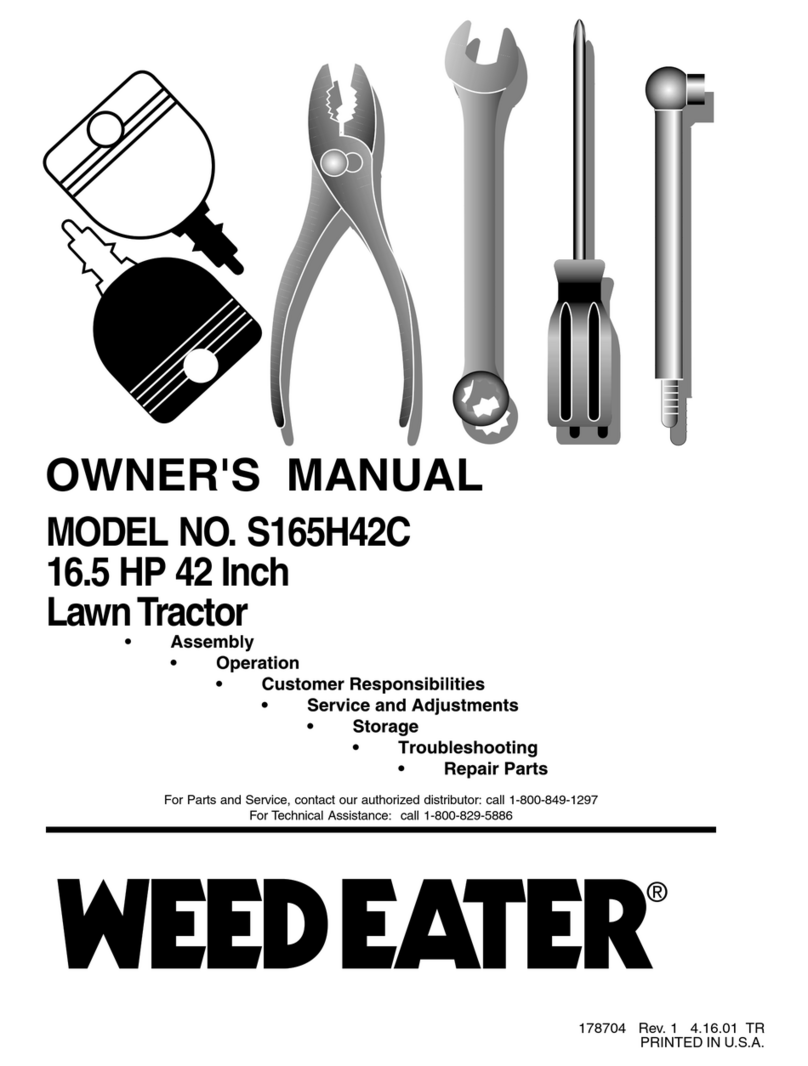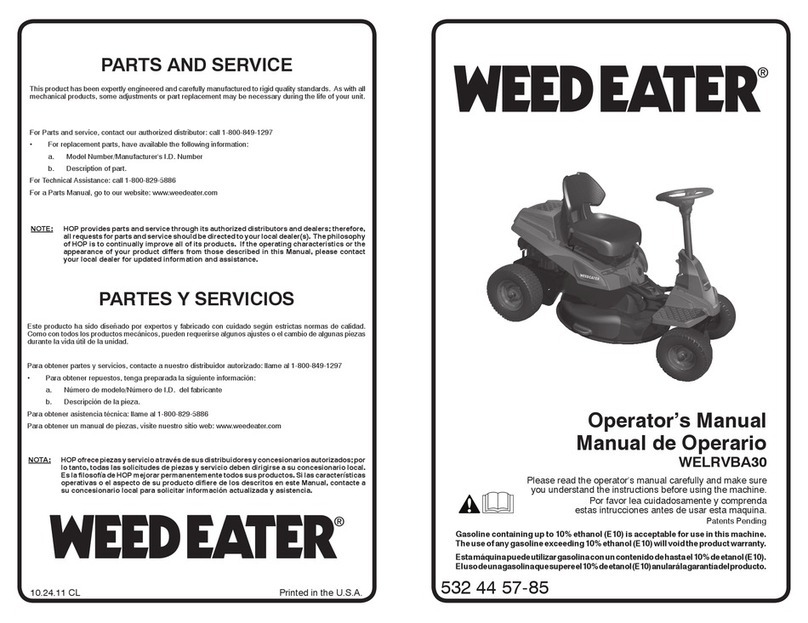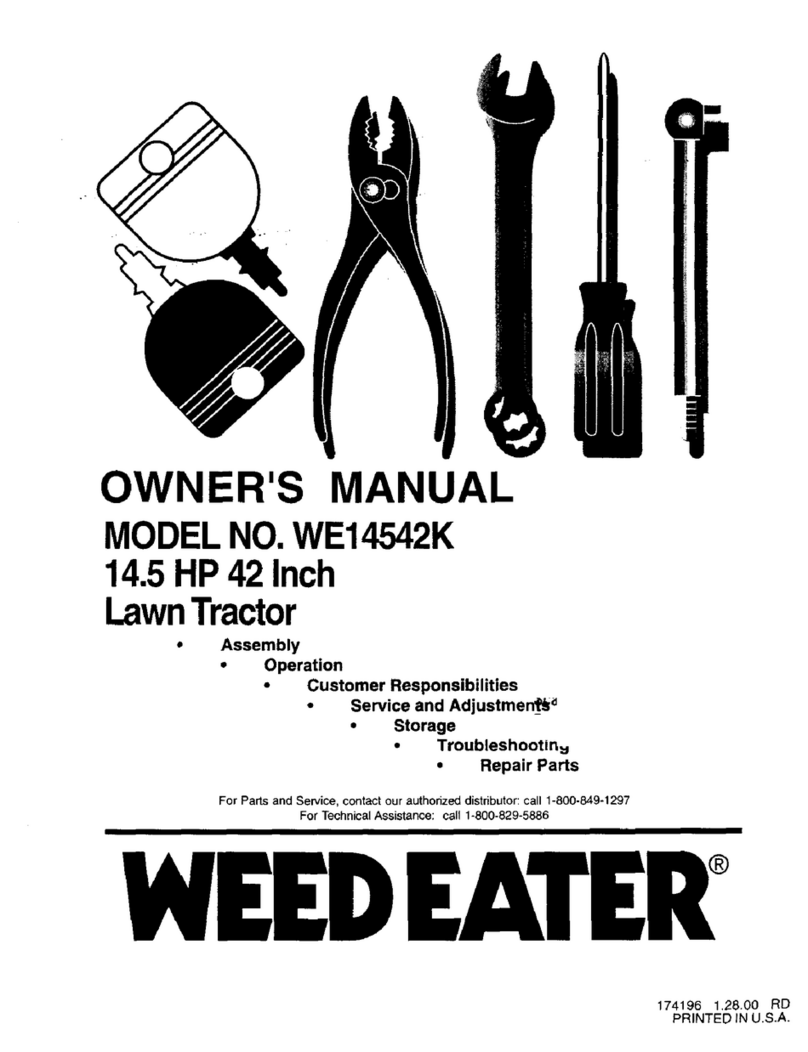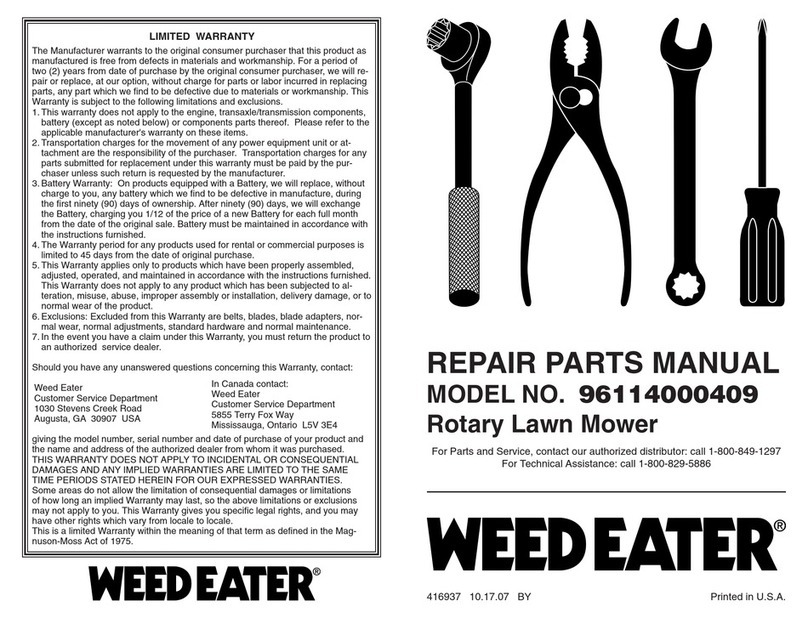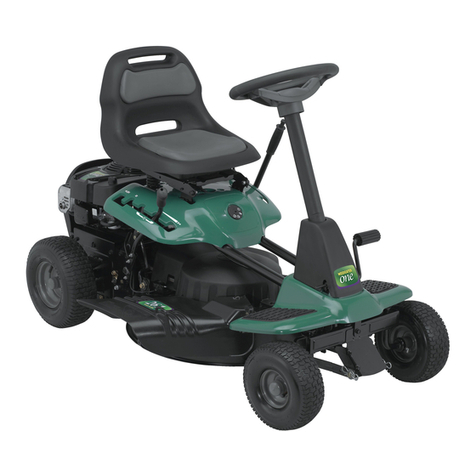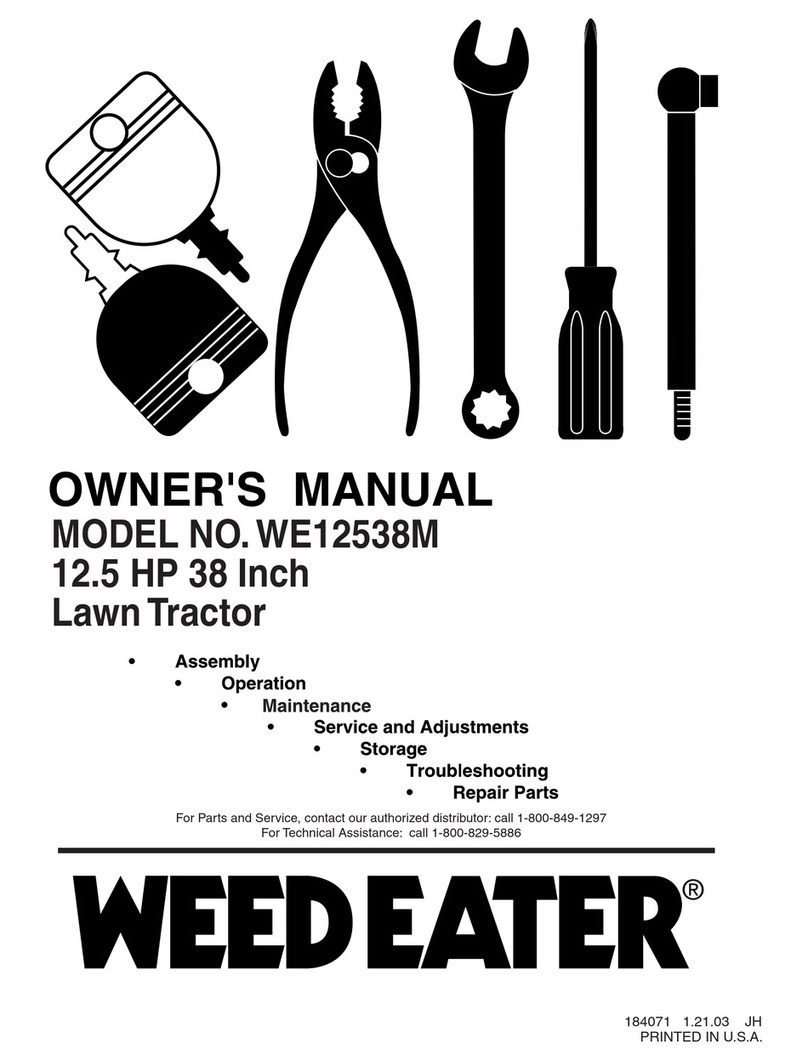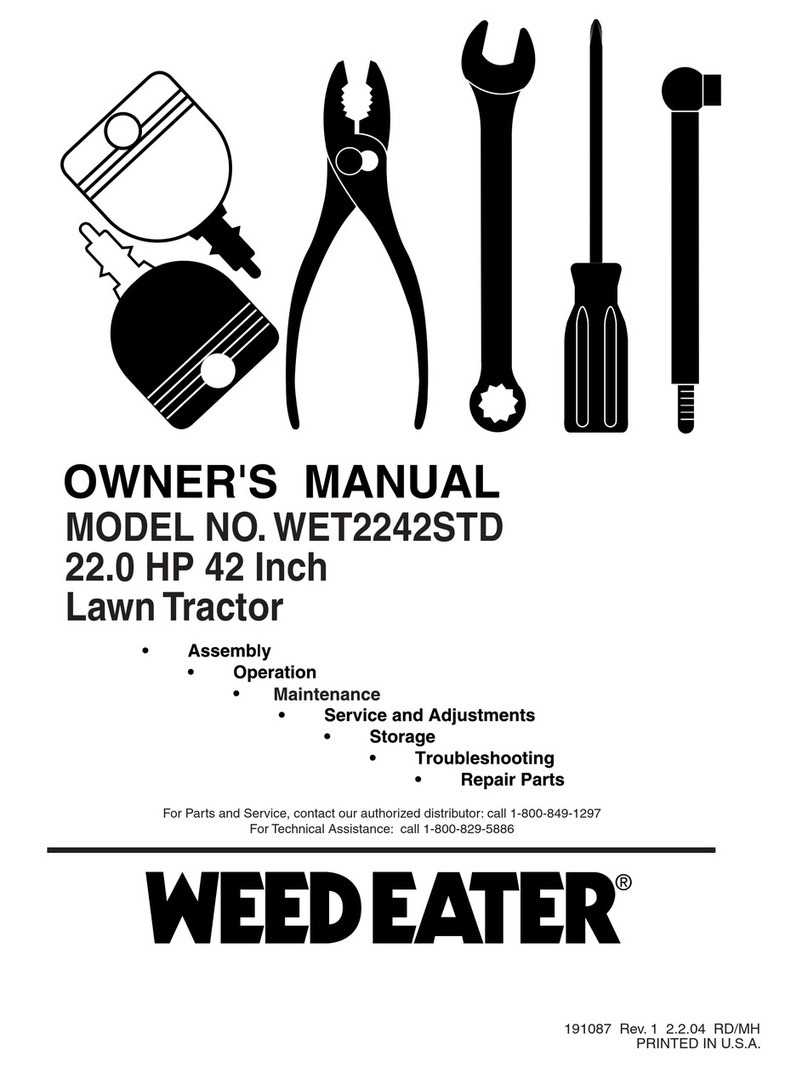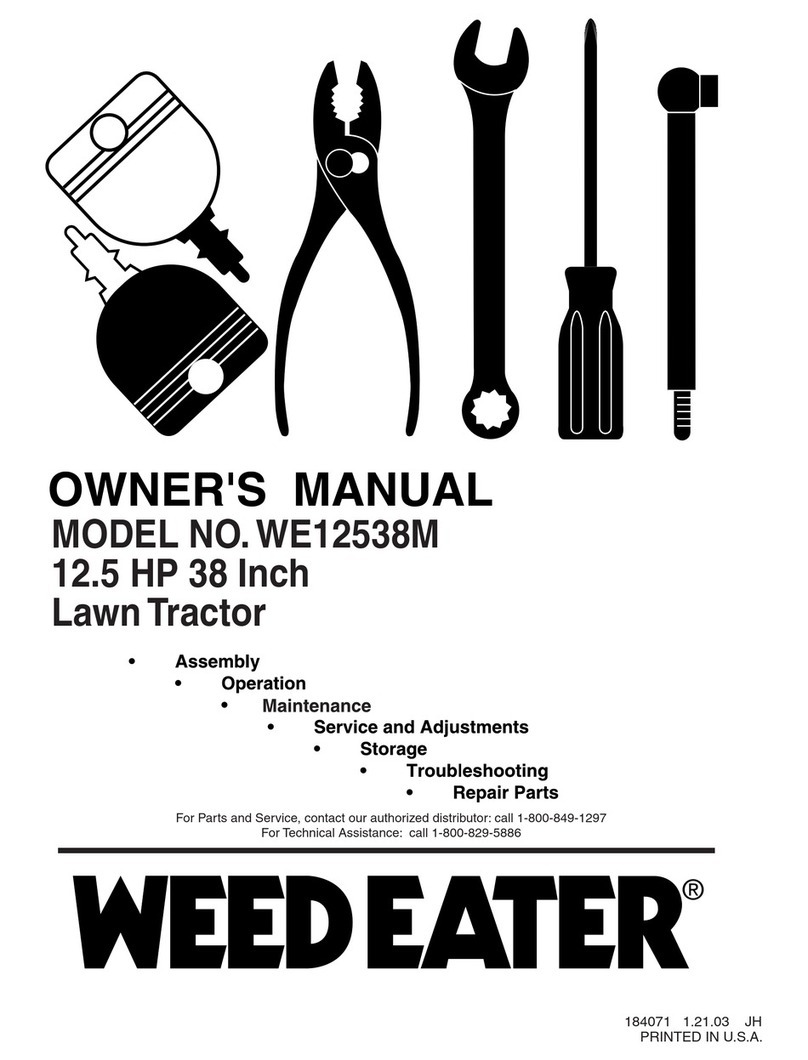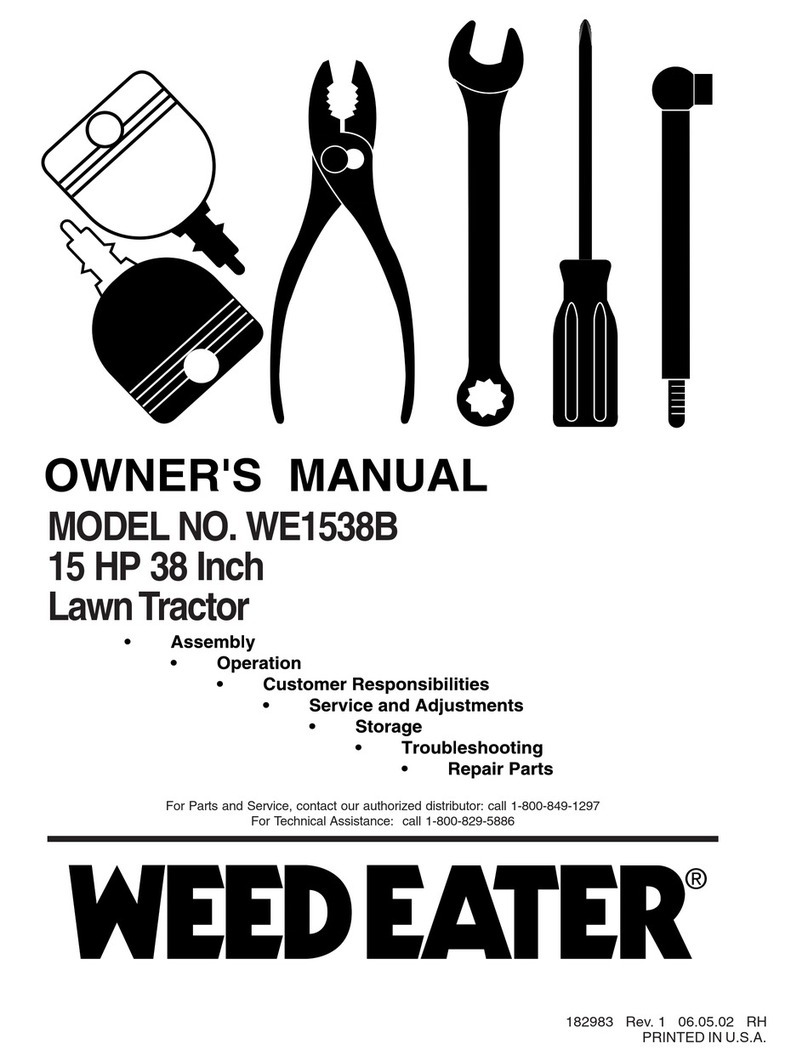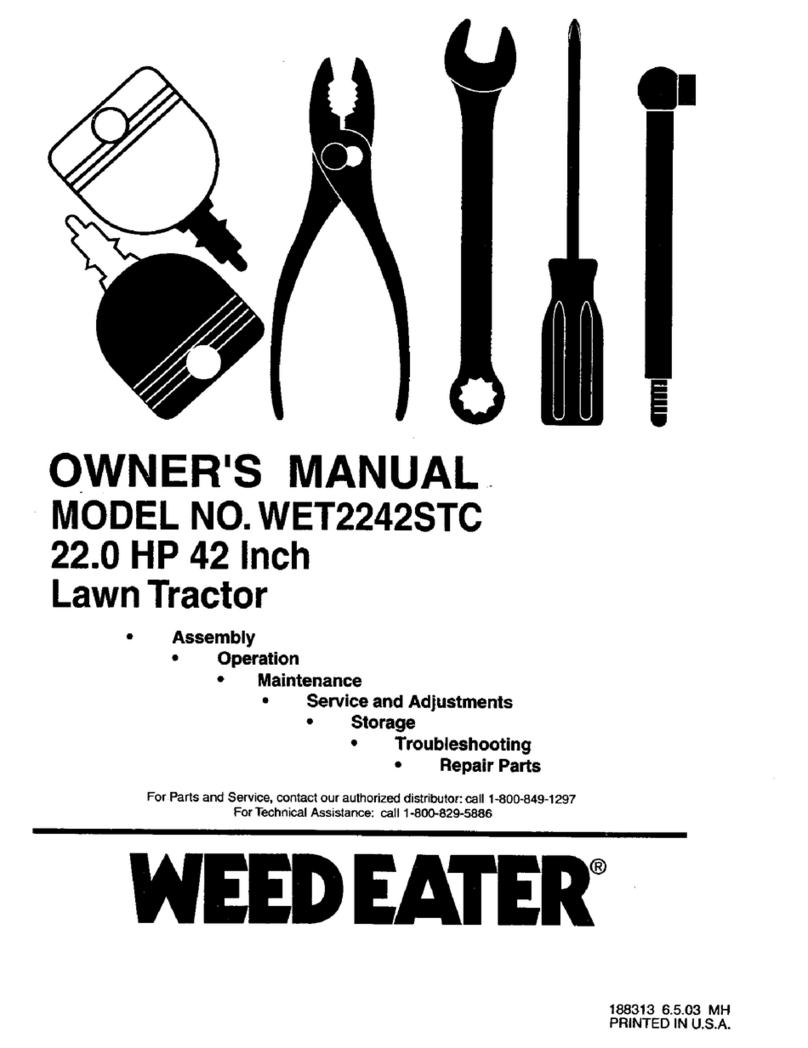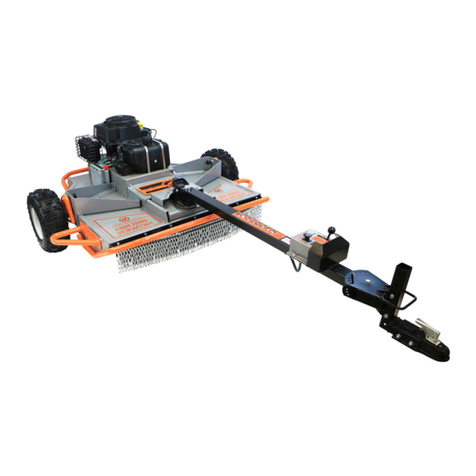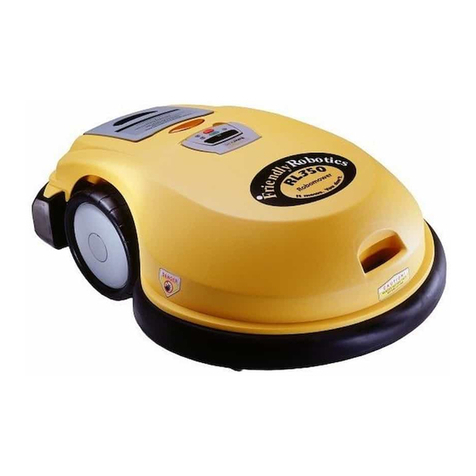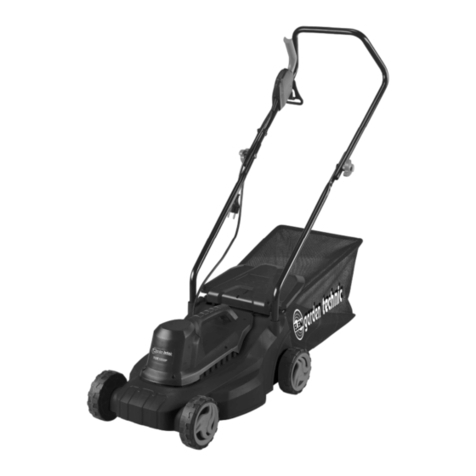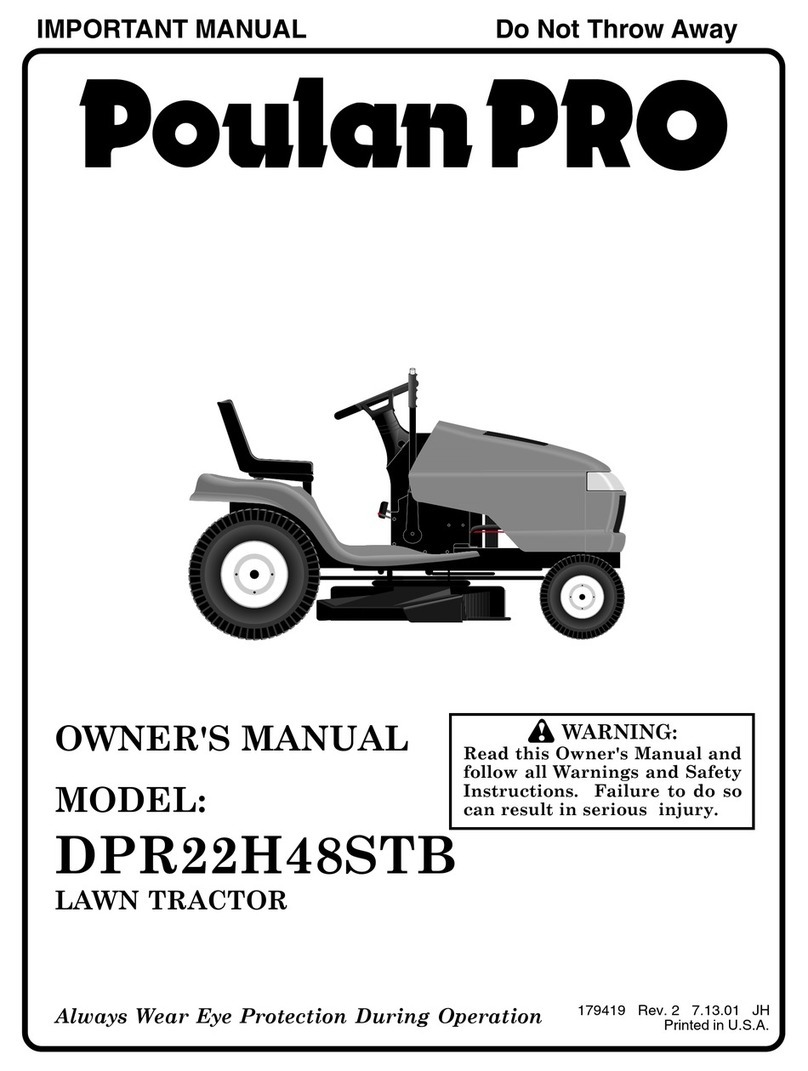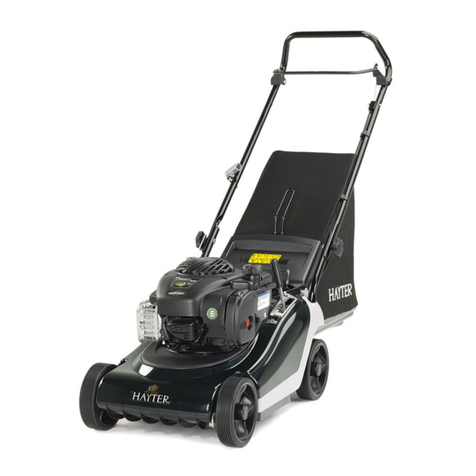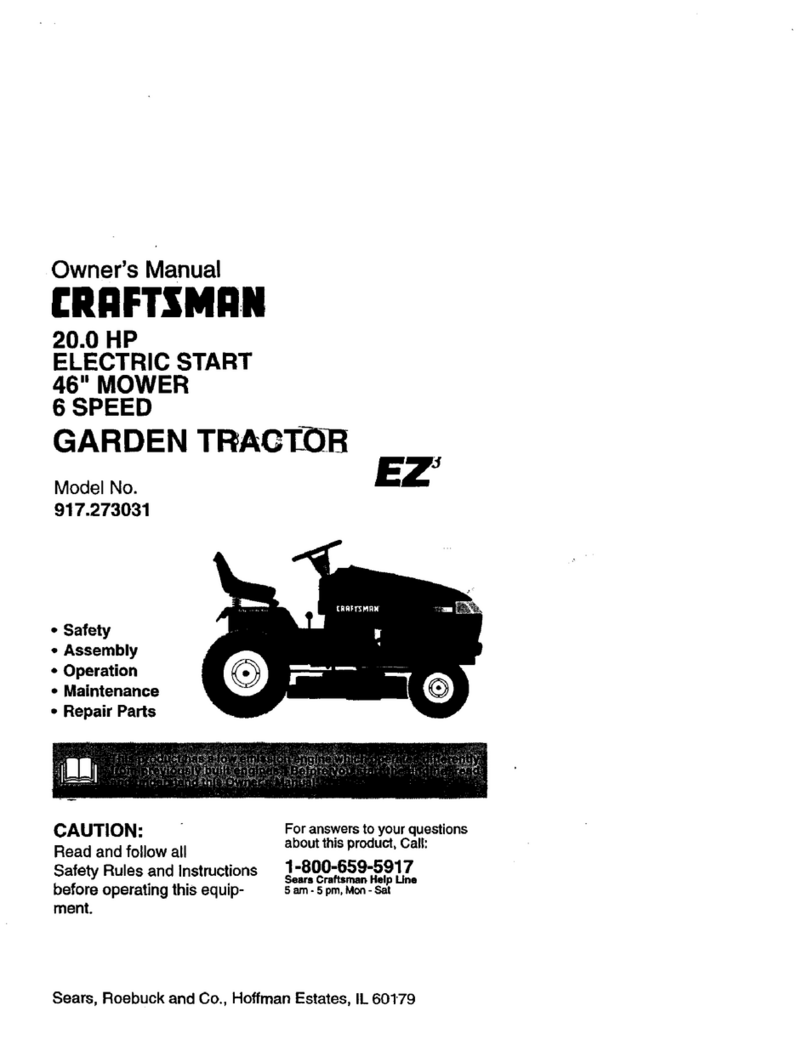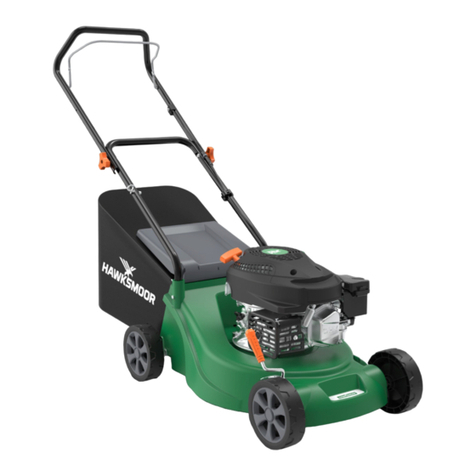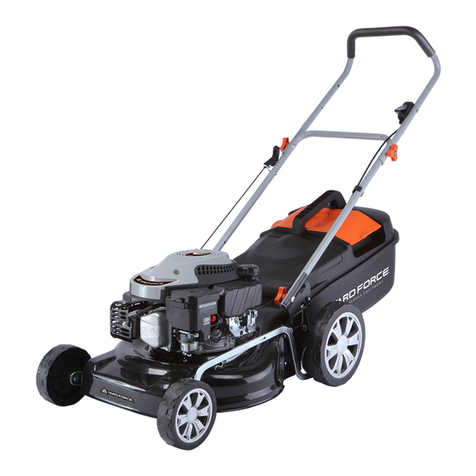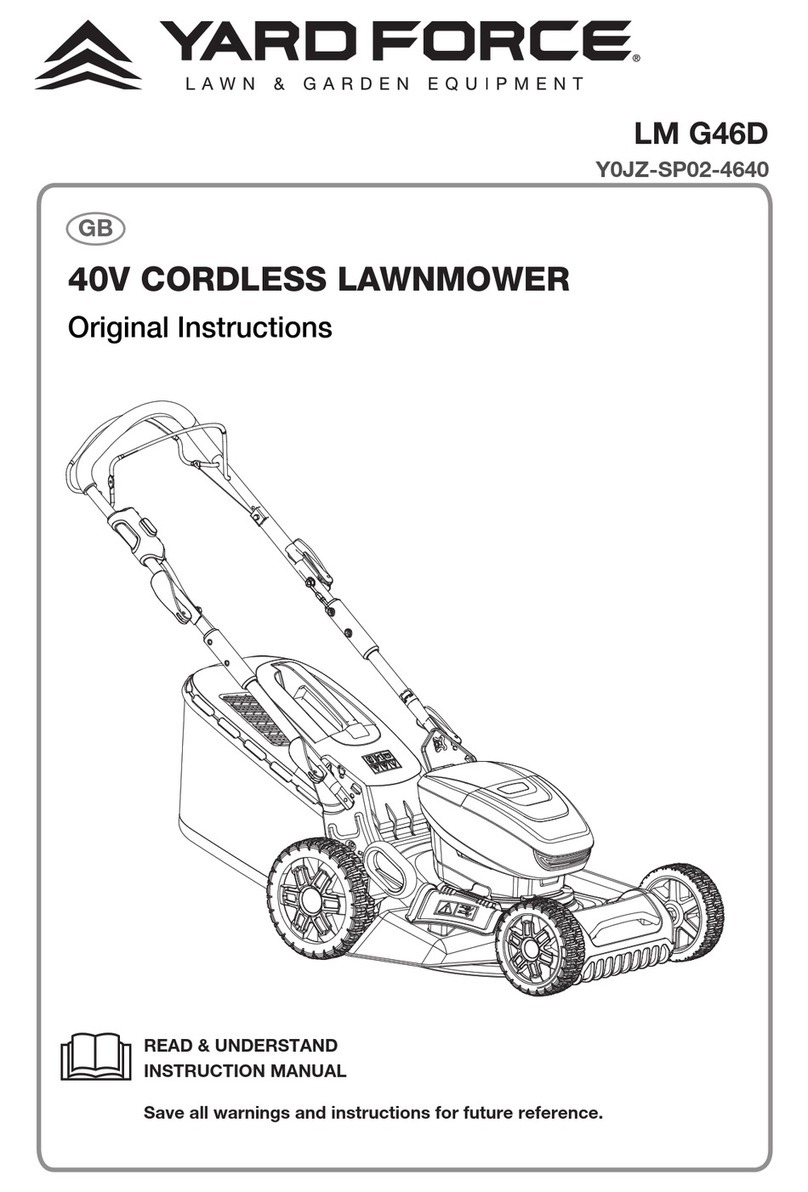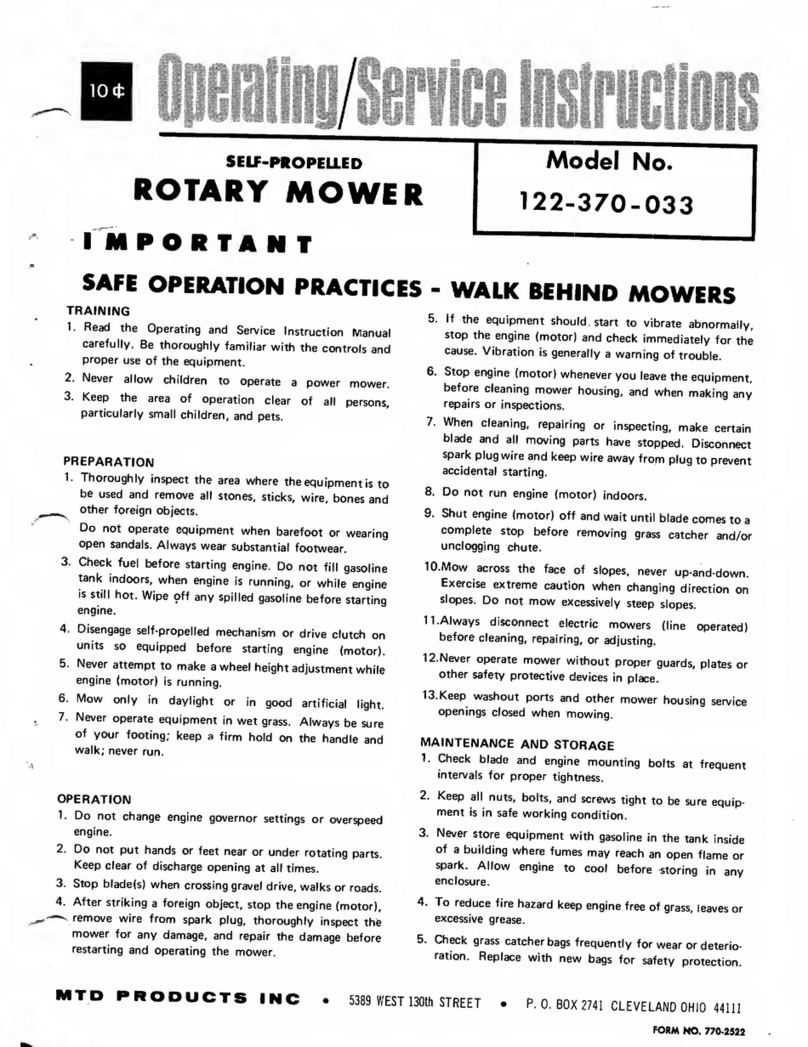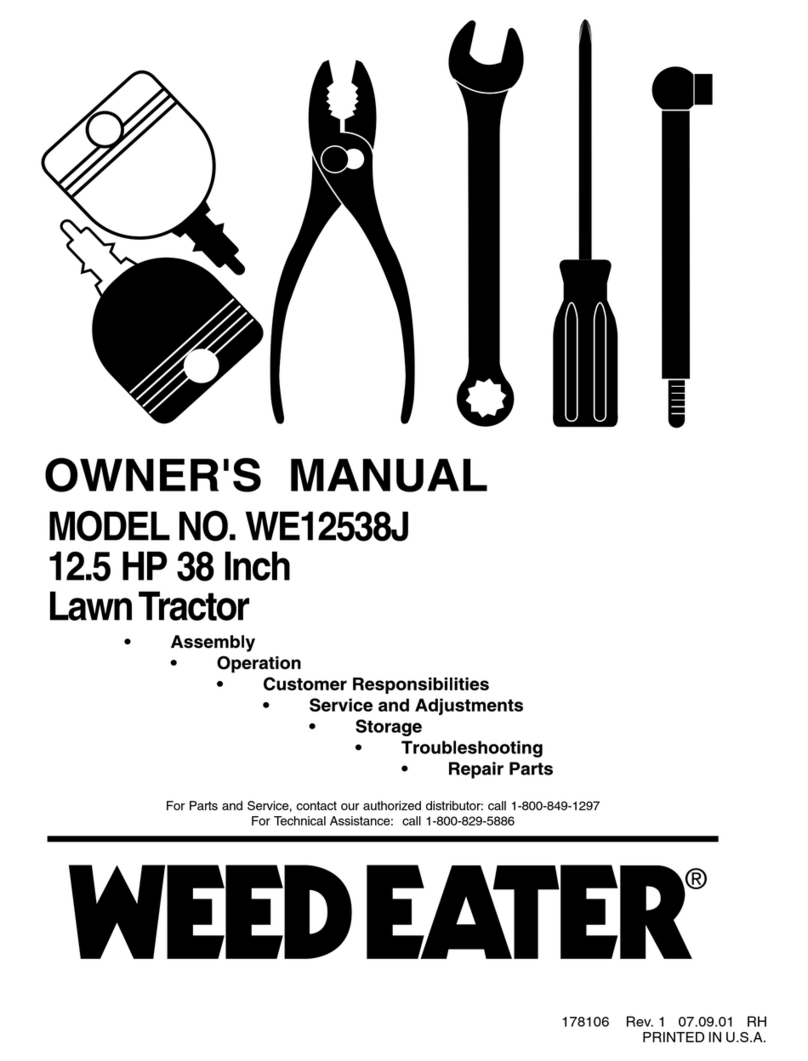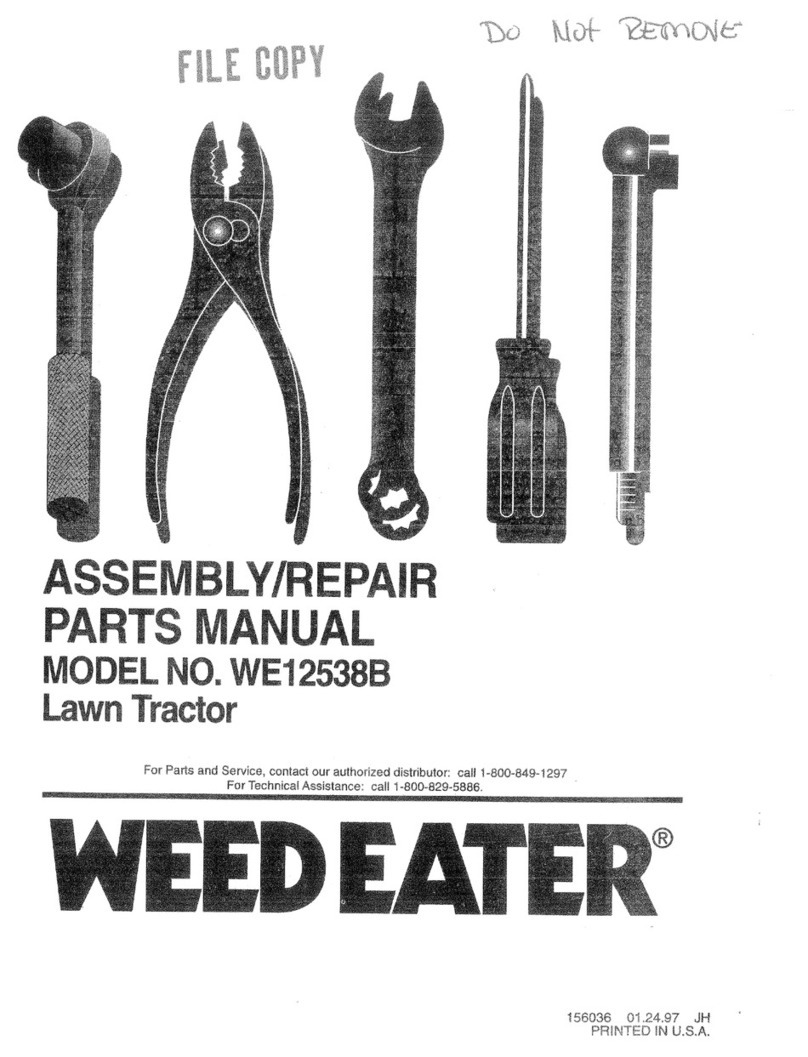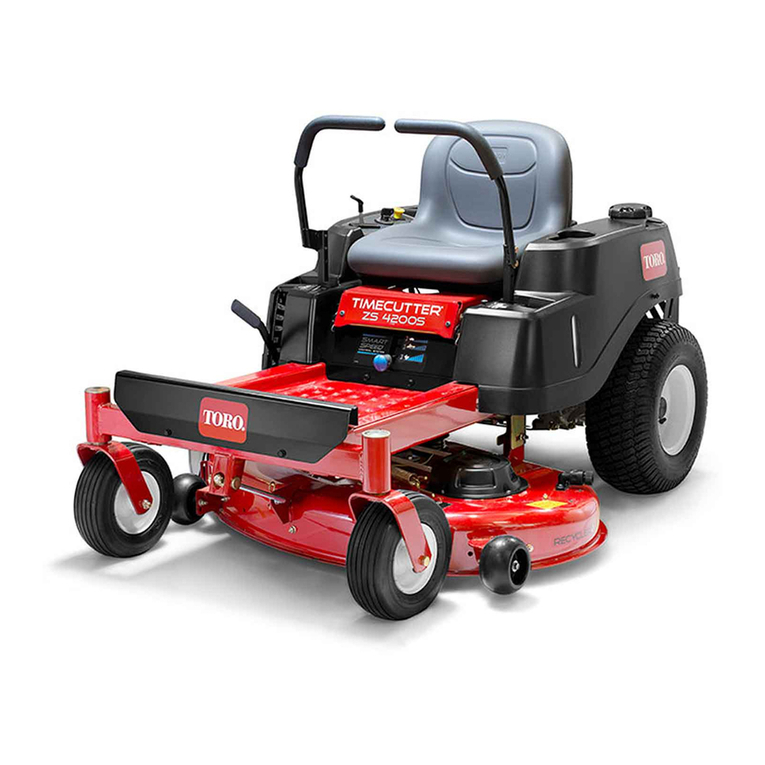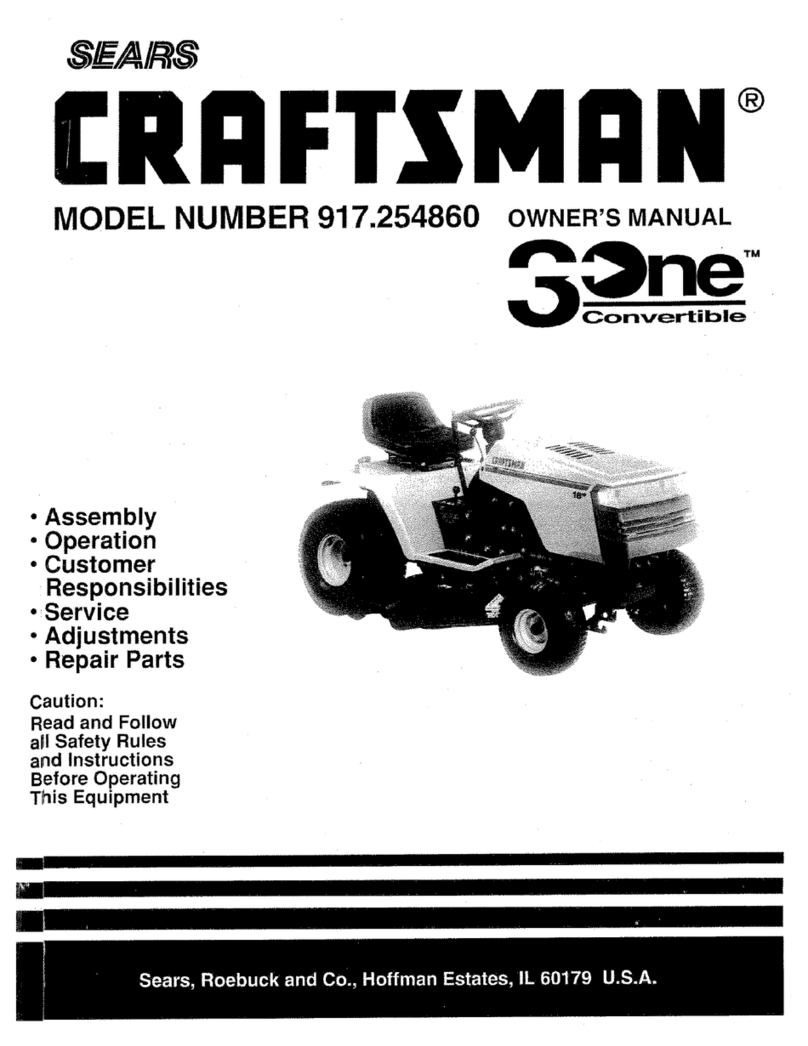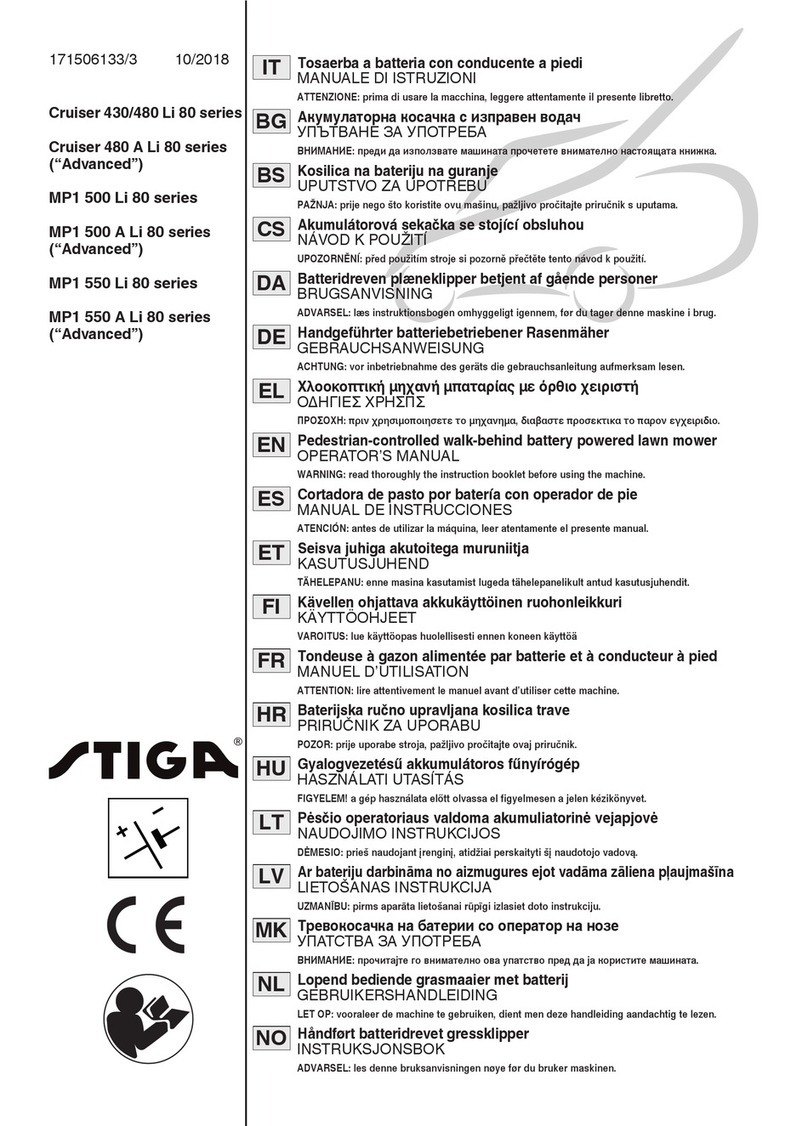SAFETY RULES
,_ SAFE OPERATION PRACTICES FOR RIDE-ON MOWERS ,_
IMPORTANT: THIS CUTTING MACHINE IS CAPABLE OF AMPUTATING HANDS AND FEET AND THROWING OBJECTS.
FAILURE TO OBSERVE THE FOLLOWING SAFETY INSTRUCTIONS COULD RESULT IN SERIOUS INJURY OR DEATH.
I. GENERAL OPERATION
•Read, understand,and followallinstructionsin the manual
and on the machine before starting.
• Only allow responsible adults, who are familiar with the
instructions, to operate the machine.
• Clear the area of objects such as rocks, toys, wire, etc.,
which could be picked up and thrown by the blade.
• Be sure the area isclear of other people before mowing.
Stop machine ifanyone enters the area.
• Never carry passengers.
• Do not mow in reverse unless absolutely necessary.
Always look down and behind before and while backing.
• Be awareof themowerdischarge direction anddo notpoint
itat anyone. Do not operate the mowerwithout eitherthe
entire grass catcher or the guard in place.
• Slow down before turning.
• Never leave a running machine unattended. Alwaystum
off blades, set parking brake, stop engine, and remove
keys before dismounting.
• Turn off blades when not mowing.
Stop engine before removing grass catcheroruoclogging
chute.
• Mow only in daylight or good artificial light.
• Do not operate the machine while under the influence of
alcohol or drugs.
• Watch for traffic when operating near or crossing road-
ways.
• Use extracarewhen loading or unloading themachineinto
a trailer or truck.
• Dataindicatesthat operators, age 60years and above, are
involved in a large percentage of riding mower-related
injuries. These operators should evaluate their ability to
operate the dding mower safely enough to protect them-
selves and others from serious injury.
• Keep machine free of grass, leaves or other debds build-
up which can touch hot exhaust /engine parts and bum.
Do not allow the mower deck to plow leaves
or other debds which can cause build-up to occur. Clean
any oil or fuel spillage before operating or storing the
machine. Allow machine to cool before
storage.
II. SLOPE OPERATION
Slopesare a majorfactor relatedto loss-of-controland tipover
accidents,whichcanresultin severeinjuryor death. Allslopes
requireextracaution. Ifyoucannotbackuptheslopeorffyoufeel
uneasyon it,do notmow it.
DO:
•Mow upand downslopes, not across.
•Remove obstaclessuch as rocks,tree limbs, etc.
•Watch for holes, ruts,or bumps. Uneven terrain could
overturn the machine. Tallgrass can hide obstacles.
•Use slow speed. Choose a low gear so thatyou willnot
have to stop orshiftwhile on the slope.
•Follow the manufacturer's recommendationsfor wheel
weights or counterweightstoimprove stability.
•Useextracarewithgrasscatchersorotherattechments.
These can change the stabilityofthe machine.
•Keep all movement on theslopes slowand gradual. Do
notmake sudden changes in speed or direction.
2
Avoid starting or stopping onaslope. IftiresIosetraction,
disengage the blades and proceed slowly straight down
the slope.
DO NOT:
•Do not tum on slopes unless necessary, and then, tum
slowly and gradually downhill, ifpossible.
Do not mow near drop-offs, ditches, or embankments.
The mower could suddenly tum over ifa wheel isover the
edge of a cliff or ditch, or if an edge caves in.
Do notmow on wet grass. Reduced traction could cause
sliding.
•Donottrytostabilizethemachinebyputtingyourfooton
theground.
•Do not use grass catcher on steep slopes.
IlL CHILDREN
Tragic accidents can occur ifthe operator is not alert to the
presence of children. Children are often attracted to the
machineandthemowingactivity. Neverassumethatchildren
willremainwhere you last saw them.
•Keep children out of the mowing area and under the
watchfulcare ofanother responsibleadult.
•Be alert and turnmachine offifchildrenenter the area.
• Beforeandwhenbecldng, lookbehindanddownforsmall
children.
•Never carry children. They may fall offand be seriously
injuredorinterferewithsafe machineoperation.
•Never allowchildrentooperate the machine.
• Usa extra carewhen approaching blind comers, shrubs,
trees, or otherobjectsthat may obscure vision.
IV. SERVICE
Use extracare inhandlinggasolineandotherfuels. They
are flammableand vaporsare explosive.
-Usaordy anapproved container.
-Never remove gas cap or add fuel with the engine
running. Allowengine to coolbeforerefueling. Do not
smoke.
- Never refuel the machine indoors.
- Never store the machine orfuel container inside where
there is an open flame, such as a water heater.
• Never runa machine inside a closed area.
• Keep nuts and bolts, especially blade attachment bolts,
tight and keep equipment ingood condition.
Never tamper with safety devices. Cheek their proper
operationregularly.
•Keep machinefree ofgrass, leaves,orotherdebrisbuild-
up. Cleanoilorfuelspillage. Allowmachine tocoolbefore
storing.
•Stop and inspectthe equipment if you strike an object.
Repair, it necessary,before restarting.
•Never make adjustments or repairs with the engine
running.
•Grasscatchercomponentsare subjecttowear, damage,
and deterioration,which could expose moving parts or
allowobjectstobethrown. Frequentlycheckcomponents
and replace with manufacturer's recommended parts,
when necessary.
•Mower blades aresharp and can cut. Wrap tbeblade(s)
or wear gloves, and use extra caution when servicing
them.
•Check brake operation frequently. Adjust and sarvice
as required.




















